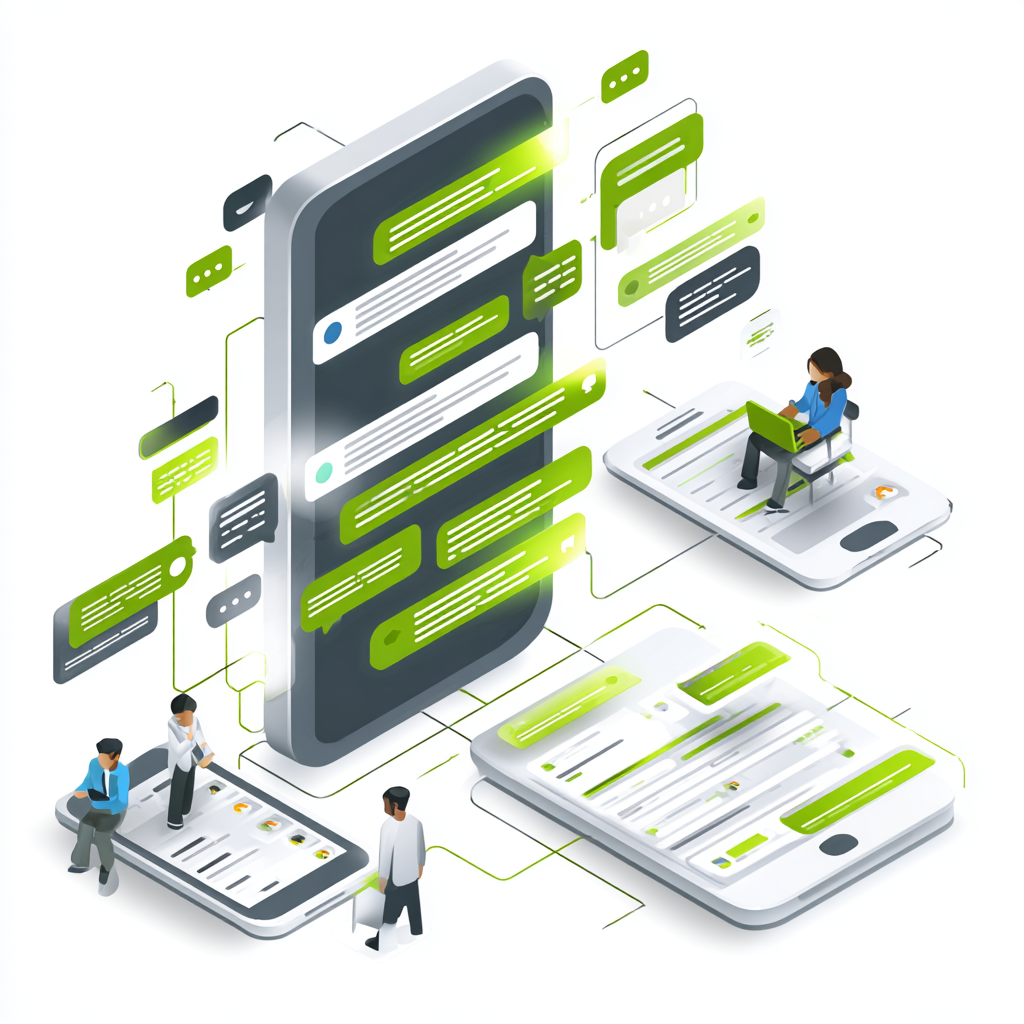In a world where choices are abundant and switching brands is just a click away, customer experience (CX) has become the new battleground for businesses. Today’s customers do not just buy products; they buy experiences. That is why improving your customer experience strategy is essential for long-term success. This article explores 10 proven ways to improve your customer experience strategy, from understanding your customer journey to creating emotionally resonant moments that turn one-time buyers into loyal advocates.
Is customer experience the same as customer service?
Customer experience and customer service are closely related but distinct concepts.
Customer service
This is the company’s support when a customer needs help, usually before, during, or after a purchase.
- It is reactive (responding to questions or problems).
- It involves direct interaction (e.g., phone calls, emails, live chat).
- Example: A customer calls to fix a billing error, and a representative assists them.
Customer experience (CX)
This is the entire customer journey with a company from the moment they first hear about it to the time they stop being a customer (and even beyond).
- It is proactive and holistic.
- It includes everything: website design, product ease of use, delivery time, service quality, social media, follow-up emails, etc.
- Example: How easy it was to find a product online, place an order, receive it on time, and get help if needed all shape the experience.
Key difference:
- Customer service is one part of the overall customer experience.
- Think of customer service as a chapter, and customer experience as the whole book.
Impact of bad customer experiences
Bad customer experiences can have far-reaching consequences for any business, regardless of size or industry. Here are the key impacts:
1. Loss of customers
Customers who have a negative experience are likely to stop doing business with a company. Over 50% of customers say they would switch to a competitor after just one bad experience.
2. Negative word-of-mouth
Unhappy customers often share their experiences with others. This can lead to:
- Bad online reviews
- Damaged reputation on social media
- Loss of potential customers who trust peer opinions
3. Reduced revenue
When customers leave or stop purchasing frequently, sales drop. Acquiring new customers is also more expensive than retaining existing ones, so poor service can quickly eat into profits.
4. Low employee morale
Dealing with frustrated customers takes a toll on employees, leading to:
- Stress and burnout
- Poor job satisfaction
- High staff turnover
5. Brand damage
One viral complaint or review can tarnish a brand’s image and cause long-term harm, especially if the business fails to respond effectively or resolve the issue promptly.
6. Customer trust declines
Once trust is broken through poor service or unresolved issues, it becomes harder to win customers back. People tend to remember negative experiences more than positive ones.
7. Competitive disadvantage
In today’s digital world, customers can easily switch to competitors. A company that fails to provide a good experience risks being left behind in favor of brands that prioritize customer satisfaction.
10 Proven ways to improve your customer experience strategy
10 Proven ways to improve your customer experience strategy include:
1. Understand the customer journey in detail
Every meaningful customer experience starts with understanding the journey your customers take. It’s not just about how they buy, but also about why they choose to interact with your brand, what expectations they carry, and how they feel at each touchpoint. Use journey maps, customer interviews, heatmaps, and CRM insights to identify bottlenecks and friction points. Start by mapping your customer journey across key phases:
- Awareness
- Consideration
- Purchase
- Onboarding
- Post-purchase support
- Loyalty or churn
Example: A SaaS company noticed that many trial users dropped off during the onboarding process. After simplifying the setup steps and offering a guided tutorial, their trial-to-paid conversion increased by 25%. When you fully understand how your customers move through your brand’s ecosystem, you can design smoother, more intuitive experiences.
2. Personalize every interaction
Personalization is no longer optional; it is expected. Today’s customers want experiences tailored to their needs, preferences, and behaviors. CRMs, email marketing platforms, AI-based analytics, and automation tools like HubSpot or Salesforce are useful tools. Example: Netflix analyzes viewing behavior to create personalized recommendations, which keeps users engaged and reduces churn. Personalization builds trust, increases engagement, and helps customers feel seen and valued, the essence of a great experience. Use customer data to personalize:
- Product recommendations
- Email content
- Ads and offers
- Customer service responses
3. Invest in employee experience
Customer experience and employee experience are closely intertwined. Happy, empowered employees are more likely to deliver outstanding service. Example: Zappos gives employees the freedom to spend time solving a customer’s issue without a script or time limit, leading to genuine, memorable interactions. When your team feels valued and supported, they’re more invested in delivering a superior customer experience. What you can do:
- Train employees on empathy, problem-solving, and customer service.
- Recognize and reward customer-centric behavior.
- Provide customers with tools and autonomy to enable them to solve their problems quickly.
4. Simplify and speed up the experience
Speed and convenience matter a lot. Long wait times, complicated processes, or hard-to-navigate websites can frustrate eager customers. Example: Uber’s one-tap ordering and in-app driver tracking reduce customer uncertainty and wait times; two critical pain points in transportation. Here’s how to reduce friction:
- Streamline checkout and payment systems.
- Enable self-service through FAQs, help centers, and chatbots.
- Integrate omnichannel support: phone, email, social media, live chat, and mobile apps.
5. Listen to your customers, and act on what you hear
Feedback is the most direct line to customer insight. But listening alone is not enough. Acting on it is where the real value lies. For example, Airbnb regularly tests user feedback on listings, search filters, and host interactions. These insights help improve both user experience and platform trust.
Ways to collect feedback:
- Surveys (CSAT, NPS, CES)
- Reviews
- Social media monitoring
- Customer interviews
Steps to take:
- Analyze feedback trends
- Address recurring issues
- Share feedback insights across departments
6. Design emotionally impactful moments
Logic drives decisions, but emotion drives loyalty. A great CX strategy must go beyond solving problems and create memorable, emotional moments. For example, a small online bookstore added handwritten thank-you notes with every order. This personal touch led to glowing social media shoutouts and a spike in returning customers. Emotional connections build lasting relationships, something no competitor can easily replicate. Think about:
- Surprise gifts or thank-you notes
- Kind gestures during tough times
- Personal recognition of birthdays or milestones
7. Be proactive, not just reactive
Do not wait for problems to arise before taking action. Proactive service builds trust and positions your brand as genuinely customer-focused. Example: A logistics company used tracking data to alert customers ahead of delivery issues and offer alternate arrangements. This reduced complaints and boosted customer satisfaction scores. Ways to be proactive:
- Notify customers of delays before they ask.
- Offer solutions before complaints arise.
- Suggest helpful content, updates, or features based on past behavior.
8. Consistently deliver across all touchpoints
A disjointed experience can damage customer trust. Customers expect the same level of service and communication, whether on your website, social media, mobile app, or when speaking to a support agent. Example: Apple delivers consistent experiences across its website, stores, customer support, and packaging, creating a unified sense of quality and care. To ensure consistency:
- Align branding and messaging across all platforms
- Centralize customer data so no one has to repeat themselves
- Ensure support teams are trained on updated policies and products
9. Embrace innovation to stay ahead
Technology is rapidly changing customer expectations. Businesses that want to stay relevant must constantly adapt, test, and innovate. Examples of innovation in CX:
- Chatbots and AI-driven support
- Voice assistants (e.g., Alexa skills)
- Augmented reality for product previews
- Virtual consultations
Case study: IKEA’s mobile app enables users to visualize furniture in their space using AR. This eliminates guesswork and improves purchase confidence. Innovation helps you meet rising expectations and keeps your brand fresh, accessible, and exciting.
10. Measure customer experience and adjust continuously
Improving customer experience is not a one-time project but an ongoing process. Use clear metrics to measure your efforts and adapt your strategy over time. Key metrics include:
- CSAT (Customer Satisfaction Score) – How happy are customers after an interaction?
- NPS (Net Promoter Score) – Would they recommend your business?
- CES (Customer Effort Score) – How easy was it to get help or make a purchase?
- Churn Rate – How many customers leave over a specific period?
- Retention Rate – How many stay?
Use insights from these metrics to:
- Identify weak areas
- Optimize successful processes
- Prioritize initiatives based on customer impact
Example: A subscription box company saw a dip in NPS scores and traced it to delayed shipping. They renegotiated with their logistics provider and improved delivery times, resulting in a 12% increase in retention. Continuous measurement keeps your strategy grounded in real customer needs, not assumptions.
Make customer experience your competitive edge
Your product might be great, and your pricing attractive, but you will lose business if your customer experience is lacking. On the other hand, brands that invest in CX often see measurable benefits, including higher revenue, stronger customer retention, better reviews, and increased referrals. Let’s recap the 10 proven ways to improve your customer experience strategy:
- Understand the customer journey
- Personalize every interaction
- Invest in employee experience
- Simplify and speed up the experience
- Listen to your customers and act
- Design emotionally impactful moments
- Be proactive, not reactive
- Deliver consistent experiences across touchpoints
- Embrace innovation
- Measure CX and adapt continuously





